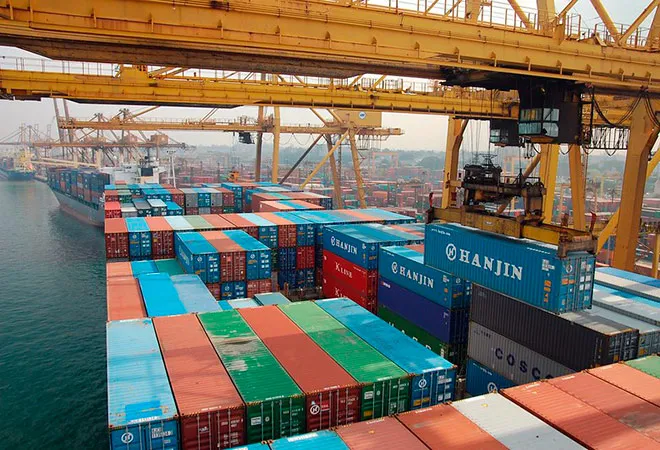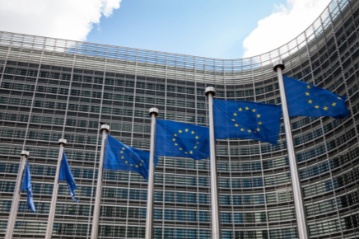
A recent agitation by 30-odd trade unions, big and small and also all the employees of the Sri Lanka Ports Authority (SLPA), calling upon the government to rescind the tripartite memorandum with India and Japan, to develop Colombo Port’s Eastern Container Terminal (ECT), has the potential to strain bilateral relations with the two countries. Gen. R.M. Daya Rathnayake (retd.), post-war army chief a decade ago, is the SLPA chairman appointed by President Gotabaya Rajapaksa, and the labour protests have caused eyebrows to rise.
The ECT protests came in the midst of the government’s equally confusing signals over taking forward funding pact with another foreign power. Like ECT, the ‘Millennium Challenge Cooperation’ (MCC) Agreement for voluntary US funding of development projects in Sri Lanka, too, was initiated by the predecessor Sirisena-Wickremesinghe government. The cabinet cleared the ECT proposal in March 2019 and the MCC pact in October 2019, that too when Rajapaksa was the clear favourite.
How far will the decision of a pre-poll, lame-duck cabinet be binding on the new government after the 5 August parliamentary polls is anybody’s guess.
After opposing the MCC agreement while in the opposition, the ruling Rajapaksas have left it now to their cabinet colleagues to come up with their views on the subject. How far will the decision of a pre-poll, lame-duck cabinet be binding on the new government after the 5 August parliamentary polls is anybody’s guess. A media analyst has questioned the methodology for assessing the debt-burden under MCC against the same for the China-funded Colombo Port City project under the previous Rajapaksa regime (2005-15). After discussions, Colombo’s US Embassy said last month that the Sri Lankan Government had sought time to ‘review’ the pact.
‘No’ to Mattala airport
Addressing an election meeting in their rural stronghold, Prime Minister Mahinda Rajapaksa, brother of the president, said that India, on his government's request, has decided not to seek a joint venture for running the Mattala Rajapaksa International Airport in the country. Built on high-interest Chinese loan when he was president, the $210 million facility, commissioned in 2013, is the world’s ‘emptiest’ international airport.
“They sold the port, but the airport could not be sold,” Mahinda said, referring to predecessor Sirisena-Wickremesinghe government undertaking a 2017 debt-equity swap and leasing out the southern-most Hambantota Port to Chinese investors for 99 years. Reports at the time spoke about prime minister Ranil Wickremesinghe simultaneously offering the Mattala Airport for Indian management. It was partly to offset the Chinese debt on the project and partly to assuage India over the new Hambantota swap deal. Nothing came of it despite talks of India developing Mattala as a training facility.
Built on high-interest Chinese loan when he was president, the $210 million facility, commissioned in 2013, is the world’s ‘emptiest’ international airport.
At his campaign meeting, Mahinda Rajapaksa claimed that he got India to accept his government’s position on Mattala during his maiden overseas visit as Prime Minister in February. However, on his return from New Delhi after his own maiden visit, his president and brother declared that Sri Lanka would develop Mattala airport on its own and the subject was “not on the table” for discussions with India.
Media analyses suspect a Chinese hand, both in the cancellation of the Mattala proposal and now the visible Sri Lankan reservations to the tripartite ECT memorandum. The Mattala Airport is not far away from the Hambantota Port, now in China’s possession The detailed agreement on the ECT is yet to be finalised, and this may be China’s last chance at thwarting the same lest it should have ‘adversarial’ presence not far away from the Beijing-funded Colombo Port City.
Chinese hand?
While Mahinda Rajapaksa talked Mattala Airport in a public rally, he mentioned$ $700 million ECT at a breakfast meeting with Tamil media editors in the country some time back. “There is no final decision on India’s participation in ECT,” Rajapaksa said. “It was an agreement between former president Maithirpala Sirisena and Indian Prime Minister Narendra Modi,” he reportedly said. The Japan part of the tripartite agreement did not seem to have come up for discussion at the breakfast meeting.
Silva and other critics are silent about India and also Japan funding ECT — funds that a debt-ridden Sri Lanka is unlikely to find anytime soon.
The formal opposition to Indian participation in the ECT comes from the ‘left-nationalist’ JVP. Constantly using the term ‘sell’ in the context of Indian participation, JVP General Secretary Tilvin Silva said: “They say it is only sharing of operations (of ECT). Have we come to a stage where we cannot manage our ports?” However, Silva and other critics are silent about India and also Japan funding ECT — funds that a debt-ridden Sri Lanka is unlikely to find anytime soon.
‘Selling national assets’
It is not as if the so-called Sri Lankan ‘concerns’ about foreign participation in developmental projects is confined to India and the ECT. Recently, the cabinet decided to revoke all foreign contracts for the construction of the 76 km Kahathuduwa-Pelmadulla Ruwanpura Expressway signed by the previous government. The project will now be undertaken with local funding and contractors, the government has said.
Overall, ‘nationalist’ polity in the country is purportedly opposed to ‘selling national assets’ to foreign countries. They were critical of the previous Rajapaksa regime awarding the Hambantota and Colombo Port City to China, and also the successors’ swap-deal on the former. But their greater vehemence is reserved for India and the rest — not China. Incidentally, Beijing also runs the Colombo International Container Terminals (CICT), which accounted for 40 percent of all container-traffic in the country last year.
But their greater vehemence is reserved for India and the rest — not China.
The previous Rajapaksa regime awarded the CICT to China as part of a 35-year BOT (‘Build, Operate and Transfer’) agreement. Earlier in 2010, the regime offered Colombo Port expansion’s First Terminal, too, to China by with SLPA retaining the management of the latter. No questions were asked or no issues of ‘national assets’ raised as China was expected to stay for the 35-year long construction window, with no clarity about a possible repeat of the Hambantota kind of ‘swap deal’, here again.
Incidentally, SLPA employees protested the Hambantota swap-deal, the then government deployed the Navy and the police to quell them. While the Rajapaksas also opposed the swap-deal, Mahinda’s son Namal Rajapaksa led a protest against the Mattala proposal outside the Indian CG in nearby Hambantota, until the family reportedly chastised him.
Not the first one
The ECT issue is not the first India project to face local opposition. As president, Mahinda called off signing the Comprehensive Economic Partnership Agreement (CEPA) with visiting prime minister Manmohan Singh in 2008, after protests outside the president’s office in war-time Colombo. In his time, ‘India-friendly’ (?) successor prime minister Ranil Wickremesinghe declared that Sri Lanka will “will never sign CEPA.”
Critics claim that John Keells already hold 35 percent of the total 51 percent SLPA’s majority share in the ECT proposal, with the remaining 49 percent going to India and Japan.
Earlier, environmentalists and also the local Tamil population protested over the Colombo government choosing a populated area for the India-funded Sampur thermal power station in eastern province. Responding to an environmental-related case in the Supreme Court in 2016, it was left to the Wickremesinghe government to declare that it was cancelling the agreement with India’s public sector NTPC for the Sampur project.
There is another angle to ECT with media reports that Indian infra major Adani Group was talking to local conglomerate, John Keells, for partnership in taking forward the project. Critics claim that John Keells already hold 35 percent of the total 51 percent SLPA’s majority share in the ECT proposal, with the remaining 49 percent going to India and Japan.
Sri Lankan critics of ECT also refer to the controversial involvement of another Indian infra group, GMR’s involvement in the Male airport development project in Maldives earlier in the decade. The Yameen presidency (2013-18), which cancelled the contract signed by rival and predecessor Mohammed Nasheed’s government, left the nation poorer by $270 million in damages awarded by the Singapore-based arbitration court, which the nation could ill-afford.
Differentiated arguments
Yet, questions remain about the differentiated Sri Lankan arguments and assessments about ‘sale of national assets’ when it came to outright, long-term transfer of possession and control of Hambantota to China and the limited Indian participation in ECT now. In the run-up to his election last year, President Gotabaya Rajapaksa unilaterally announced re-negotiating the Hambantota swap-deal with, if elected. On assuming office, however, he claimed to have founded out that it was a ‘commercial deal’ and nothing could be done about it.
All this indicates the possible existence of ‘national consensus’ of a kind — so much so the supposedly India-friendly Tamil National Alliance (TNA) too has no opinion to offer on ECT, for instance.
It sounded familiar to Sri Lanka watchers, who saw a parallel to rival Ranil Wickremesinghe unilaterally offering to scrap the Colombo Port City deal with China ahead of the 2015 presidential polls, and later settling for a modified version after becoming Prime Minister under newly-elected president Maithripala Sirisena. All this indicates the possible existence of ‘national consensus’ of a kind — so much so the supposedly India-friendly Tamil National Alliance (TNA) too has no opinion to offer on ECT, for instance.
Away from media glare, the two countries are holding talks for India to reschedule Sri Lanka’s $900 million India debt, as mentioned by Prime Minister Mahinda during his India visit. According to economist and former minister, Harsh de Silva, President Gotabaya’s regime has added an additional LKR 1,000 billion (5.38 billion) to national debt in the first four months of the current fiscal, commencing in January, as against the LKR 5,700 billion ($31 billion) by the predecessor in five years.
According to reports, the nation’s total gross external debt alone stood at $50,448 million in the first quarter of 2020, as against $55,916 million in the previous quarter. At the end of fiscal 2019, the nation’s total debt to GDP stood at a whopping 86.80 percent.
The views expressed above belong to the author(s). ORF research and analyses now available on Telegram! Click here to access our curated content — blogs, longforms and interviews.




 PREV
PREV


